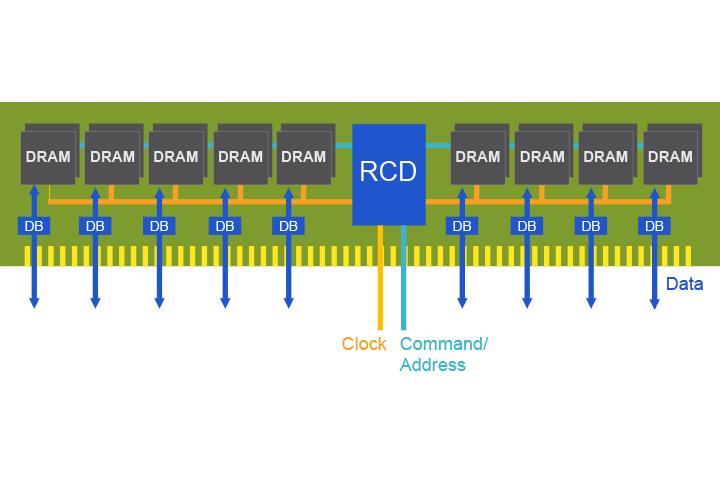World’s first DDR5 DIMM chipset developed by Rambus, Slated for 2019

Rambus claims to have achieved industry’s first fully functional DDR5 DIMM (dual in-line memory module) prototype. The next-gen interface for DRAM that could help double the throughput of the main memory versus DDR4, is expected to go into production sometime in 2019.
“We are proud to provide an early path to adoption with the first working buffer chip prototype running at the anticipated performance of next-generation DDR5,” said Luc Seraphin, SVP & GM of the Rambus Memory and Interfaces Division. “This demonstrates our continued dedication to be first to market and remain on the leading edge of industry standards.”
READ ALSO: AMD’s Next-Gen Ryzen and Vega to Use 12nm LP Process in 2018

According to the memory company, its DIMM prototype is an industry first to achieve “the speeds required for the upcoming DDR5 standard.” While the Joint Electronic Devices Engineering Council (JEDEC) is yet to finalize an industry standard for DDR5 memory, it has already confirmed DDR5 will deliver the following significant advantages over DDR4:
- Double bandwidth of DDR4
- Double density of DDR4
- Improved channel efficiency compared to DDR4
- Greater power efficiency
To put it in terms of empirical data, you can expect a DDR5 DIMM to support data rates up to 6.4Gbits/s delivering 51.2GBytes/s max, up from 3.2Gbits/s and 25.6GBytes/s for today’s DDR4.
EETimes explains that new version will push the 64-bit link down to 1.1 V and burst lengths to 16 bits from 1.2 V and 8 bits. In addition, DDR5 lets voltage regulators ride on the memory card rather than the motherboard.

The first DDR5 memory kits are likely to target high-performance systems running demanding applications such as machine learning, and complex scientific calculations. Eventually they will make their way to consumer desktops by the end of 2020.
DDR5 is inevitable to replace DDR4 as a standard; however, the bigger question is how this is going to affect pricing. The average selling price (ASP) of consumer DDR4 memory modules has nearly doubled in the past 12 months and is still on the rise.